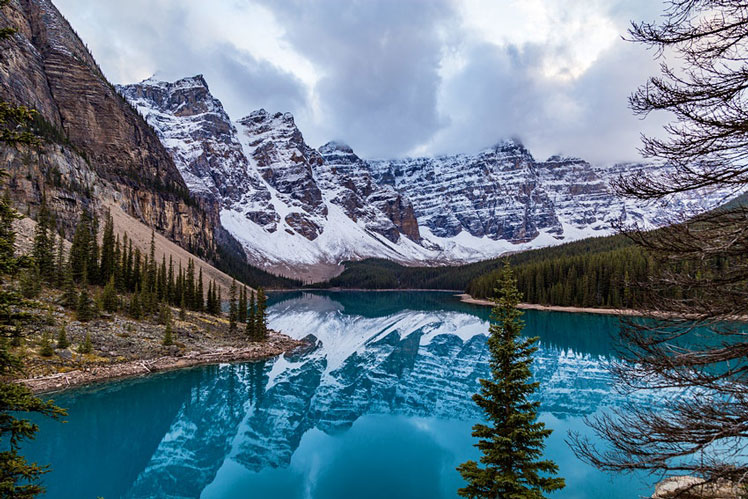
Canada's 12 best natural wonders
TripFalcon September 06, 2020
Last Update: 2020-09-05 23:55:16From the stunning Moraine Lake to the popular Niagara Falls to the white-capped Rockies, Canada's natural wonders are what make the globe's second-biggest country a true treasure. Walk among colossal cedars, marvel at aurora borealis, or just spend some peaceful moments on the water at any one of these natural wonders.
The Rockies – British Columbia & Alberta
The saw-tooth, white-topped mountains straddling the British Columbia–Alberta border inspire both awe and action. Five national parks – Banff, Yoho, Kootenay, Waterton Lakes and Jasper – offer countless opportunities to delve into the lush wilderness, with ribbons of hiking trails, rushing white water and powdery ski slopes. The Rockies Rail Route provides another popular way to experience the grandeur: luminous lakes, jumbles of wildflowers and glistening glaciers glide by as the steel cars chug up mountain passes and down river valleys en route to points east or west.
Haida Gwaii – British Columbia
Once known as the Queen Charlotte Islands, this dagger-shaped archipelago 80km (50 mi) off British Columbia's coast is a magical trip for those who make it. Colossal spruce and cedars cloak the wild, rain-sodden landscape. Bald eagles and bears roam the ancient forest, while sea lions and orcas cruise the waters. But the islands' real soul is the resurgent Haida people, best known for their war-canoe and totem-pole carvings. See the lot at Gwaii Haanas National Park Reserve, which combines lost villages, burial caves and hot springs with some of the continent's best kayaking.
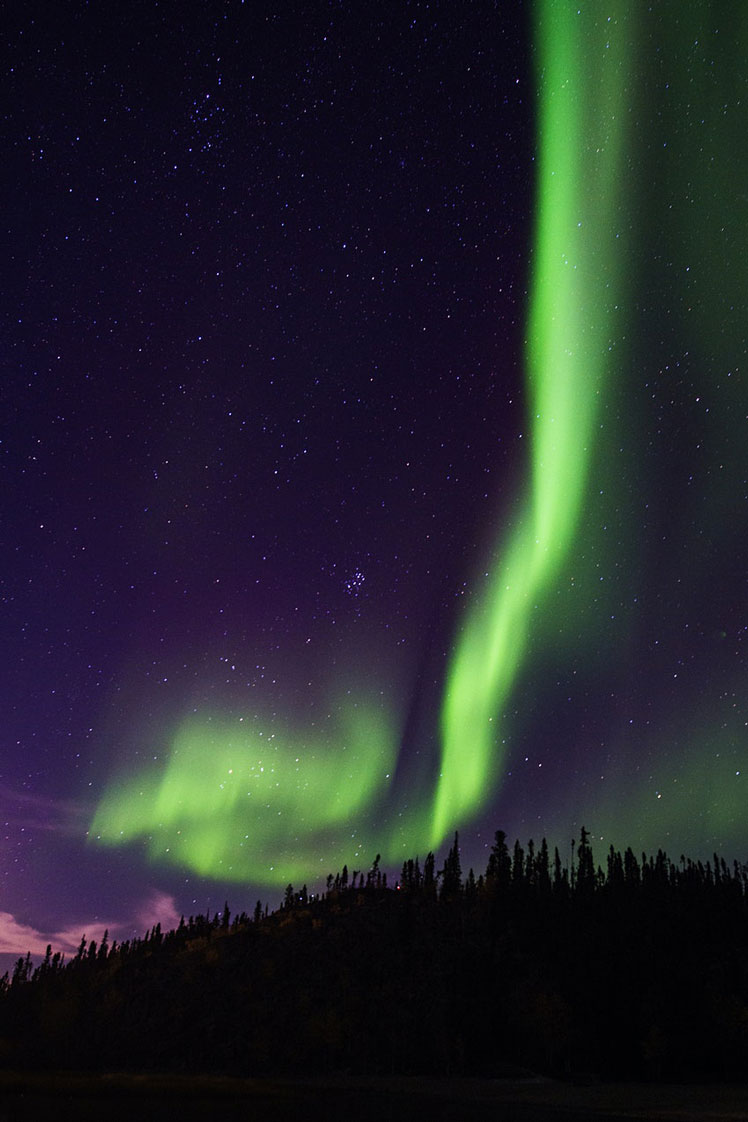
The best time to see the Northern Lights is from September to March © Frankie Cheung / Shutterstock
Northern Lights
Canada has a lot of middle-of-nowhere, high-latitude places, from the Labrador coast to Arctic villages. They may not seem like much during the day, but at night, drapes of green, yellow, aqua, violet and other polychromatic hues flicker and dance across the sky. Traditionally, some Inuit peoples believed the northern lights (aka the aurora borealis) were the spirits of hunted animals, while others feared they were the lanterns of demons chasing lost souls. Seen from September to March, darker skies make the coldest winter months the best for viewing.
Niagara Falls – Ontario
Crowded? Cheesy? Well, yes. Niagara Falls is short, too – it doesn't even crack the top 500 worldwide for height. But c'mon, when those great muscular bands of water arc over the precipice like liquid glass, roaring into the void below, and when you sail toward it in a mist-shrouded little boat, Niagara Falls impresses big time. In terms of sheer volume, nowhere in North America beats its thundering cascade, with more than one million bathtubs of water plummeting over the edge every second.
Baffin Island – Nunavut
The forlorn, brutal landscape of the Inuit, Baffin is home to cloud-scraping mountains and a third of Nunavut's population. The island's crown jewel is Auyuittuq National Park – whose name means “the land that never melts” – and indeed glaciers, fjords and vertiginous cliffs fill the eastern expanse. The park is a siren call for hardcore hikers and climbers, and more than a few polar bears.
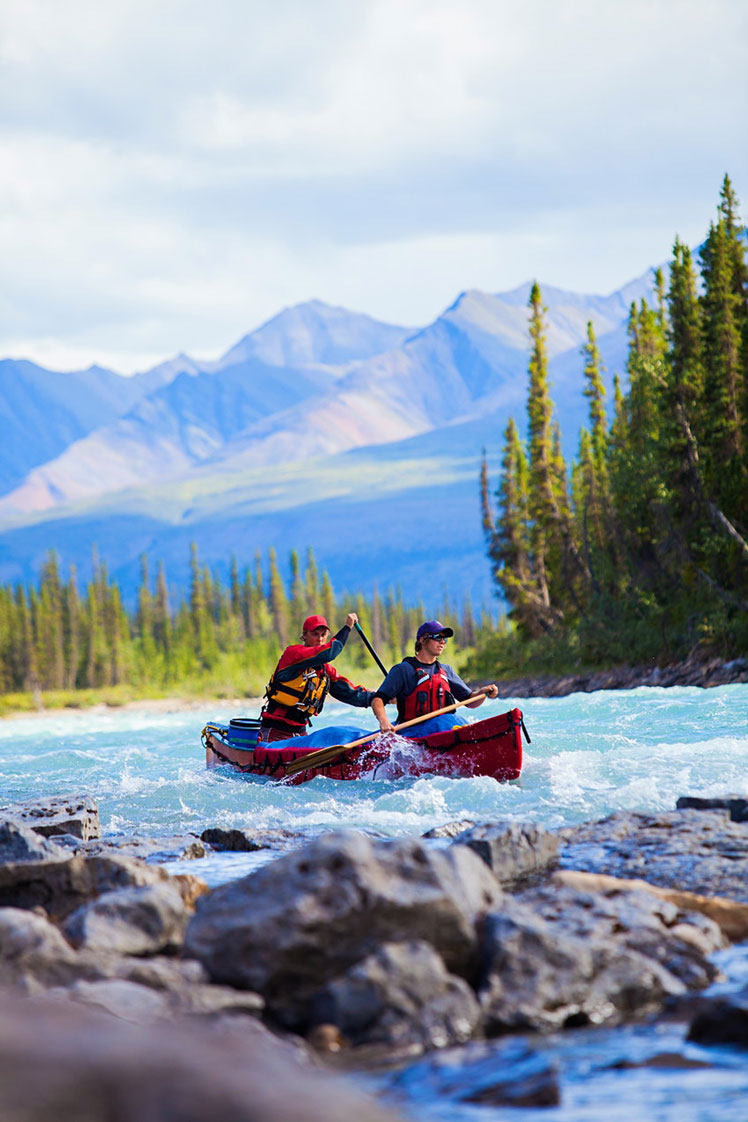
Nahanni National Park Reserve is popular among paddlers © GROGL / Getty Images
Nahanni National Park Reserve – Northwest Territories
Gorgeous hot springs, haunted gorges and gorging grizzlies fill this remote park near the Yukon border, and you'll have to fly in to reach them. Only about 1000 visitors per year make the trek, half of them paddlers trying to conquer the South Nahanni River. Untamed and spectacular, it churns 500km (310 mi) through the Mackenzie Mountains. Thirty-story waterfalls, towering canyons and legends of giants and lost gold round out the journey north. Visit on a fly-in day trip or paddle the Mackenzie River for a week or two.
Moraine Lake – Alberta
The spectacular, deep teal waters of Moraine Lake are one of Banff’s iconic sights. The lake’s rugged and remote setting in the Valley of the Ten Peaks, accessed via a narrow winding road, only add to its allure. Many visitors actually prefer Moraine Lake to the more famous Lake Louise – so many, in fact, that you'll have to be lucky or an early riser to get a parking spot here; the lot often fills up by 5:30am in peak season.
Tablelands – Northern Peninsula
Dominating the southwest corner of the park, near Trout River, are the unconquerable and eerie Tablelands. This huge flat-topped massif was part of the earth's mantle before tectonics raised it from the depths and planted it squarely on the continent. Its rock is so unusual that plants can't even grow on it. You can view the barren golden phenomenon up close on Rte 431, or catch it from a distance at the stunning photography lookout above Norris Point.
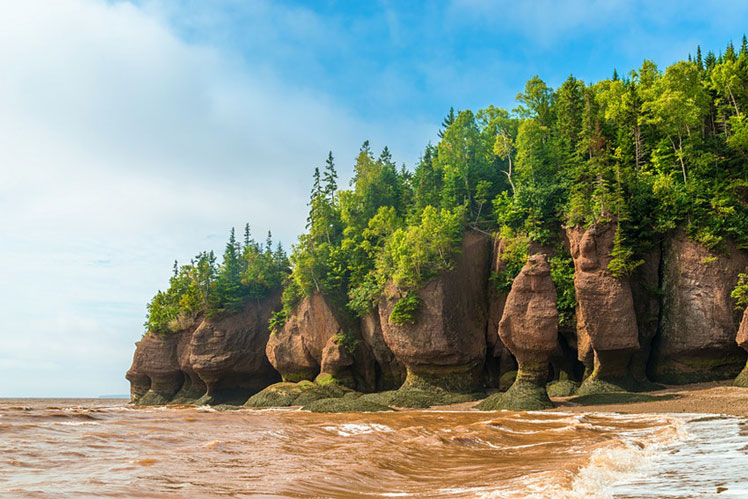
The Dr. Seussian formations of the Hopewell Rocks are a popular New Brunswick attraction © Vadim Petrov / Shutterstock
Hopewell Rocks – New Brunswick
The Hopewell Rocks are bizarre sandstone erosion formations known as “flowerpots,” rising from the ocean floor. They resemble giant arches, stone mushrooms and animals. Many come to marvel at their Dr. Seussian look, making the rocks New Brunswick's top attraction and certainly one of its most crowded.
You can only walk amid the rocks at low tide; at high tide, the rock towers are still visible from the well-trafficked trails that wind through the woods above, or you can join a kayaking tour to bob around them.
Torngat Mountains National Park – Newfoundland / Labrador
Named from the Inuktitut word torngait (place of spirits), the Torngat Mountains National Park is the ancestral home of Inuit and their predecessors. Its spectacular wilderness features herds of caribou, polar bears and even seals in a freshwater habitat. The park comprises 9700 sq km (3745 sq miles), extending from Saglek Fjord in the south, including all islands and islets, to the very northern tip of Labrador. No superlatives can do the beauty of this place justice.
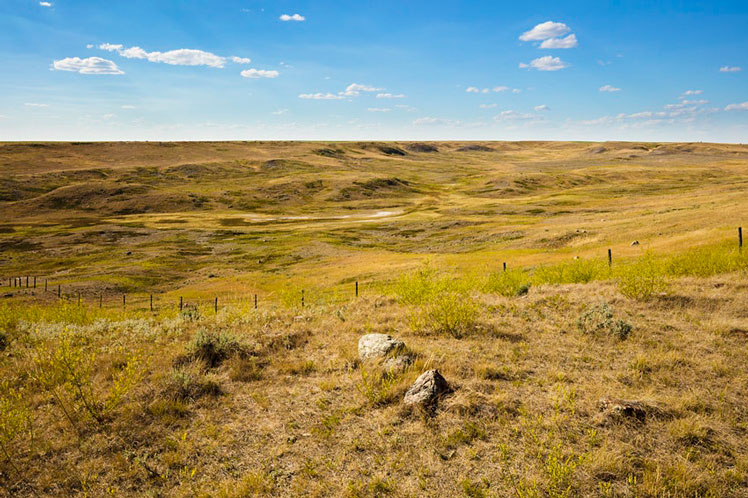
Fields of golden wheat stretch to the horizon © Dubicki Photography / Getty Images
The Prairies – Saskatchewan, Manitoba
Solitude reigns in Canada's middle ground. Driving through the flatlands of Manitoba and Saskatchewan turns up uninterrupted fields of golden wheat that stretch to the horizon, eventually melting into the sunshine. When the wind blows, the wheat sways like waves on the ocean, punctuated by the occasional grain elevator rising up like a tall ship. Big skies mean big storms that drop like an anvil, visible on the skyline for miles.
Manitoulin Island – Ontario
The largest freshwater island in the world, floating right in Lake Huron's midst, Manitoulin is a slowpoke place of beaches and summery cottages. Jagged expanses of white quartzite and granite outcroppings edge the shoreline and lead to shimmering vistas.
First Nations culture pervades, and the island's eight communities collaborate to offer local foods (wild rice, corn soup) and eco-adventures (canoeing, horseback riding, hiking). Powwows add drumming, dancing and storytelling to the mix.

